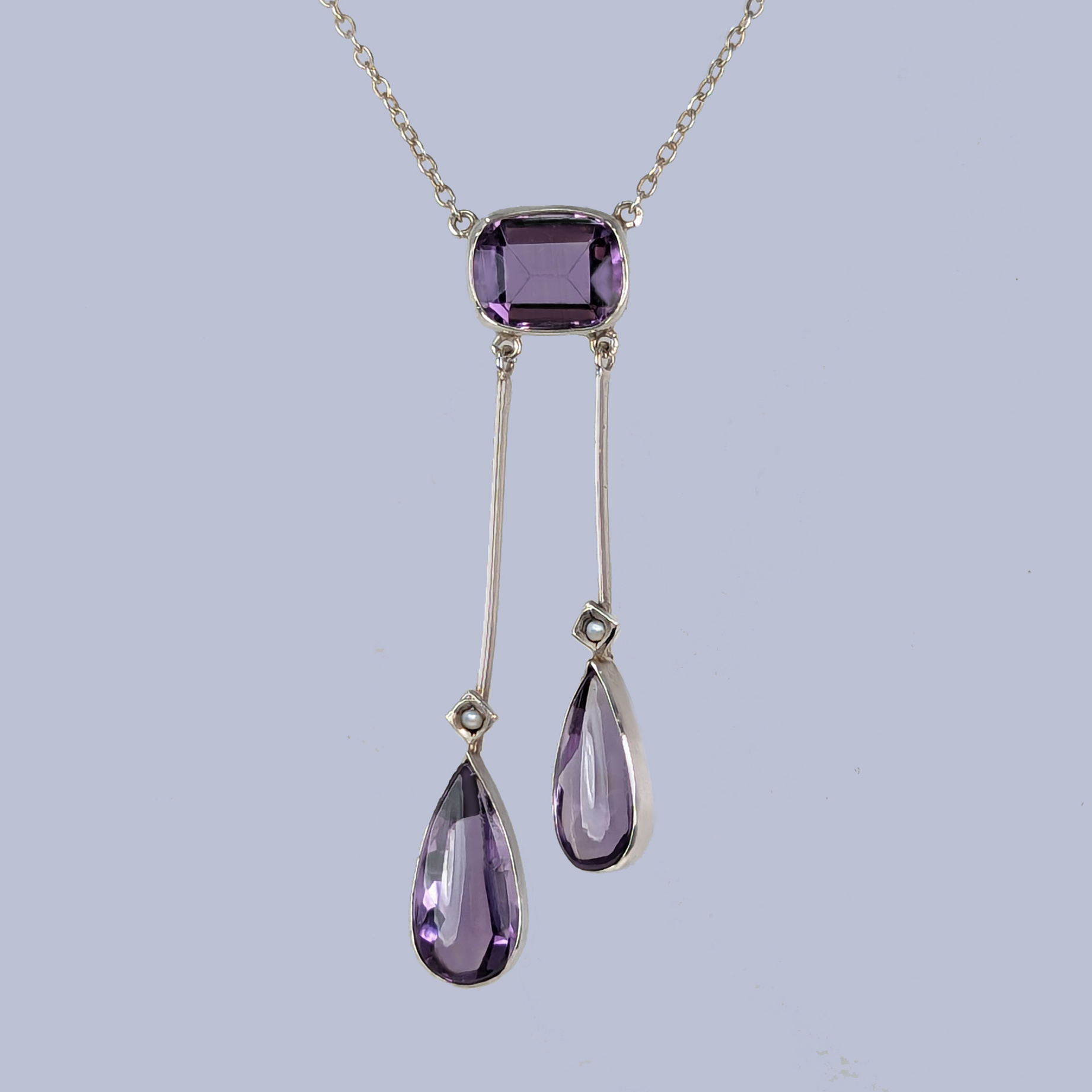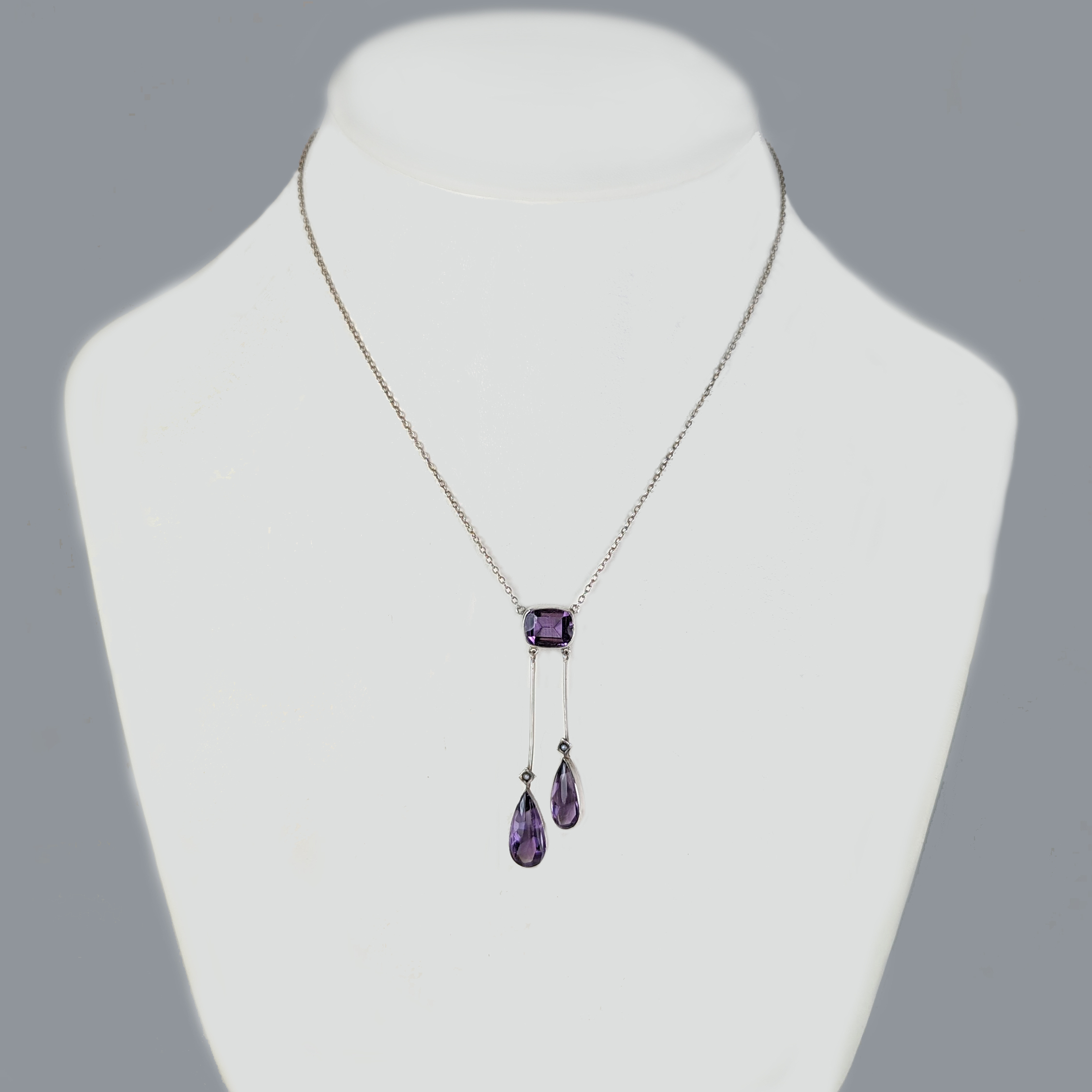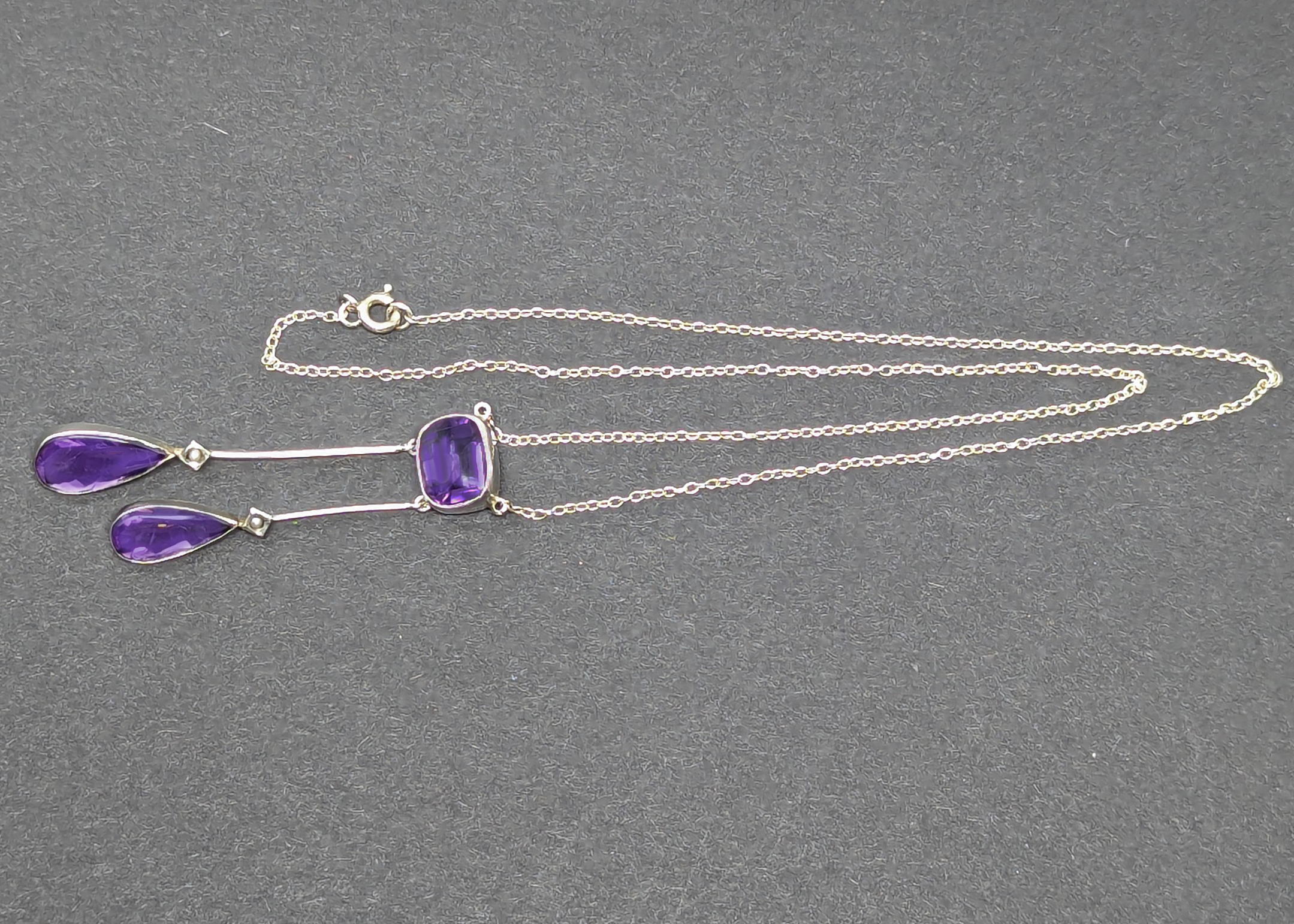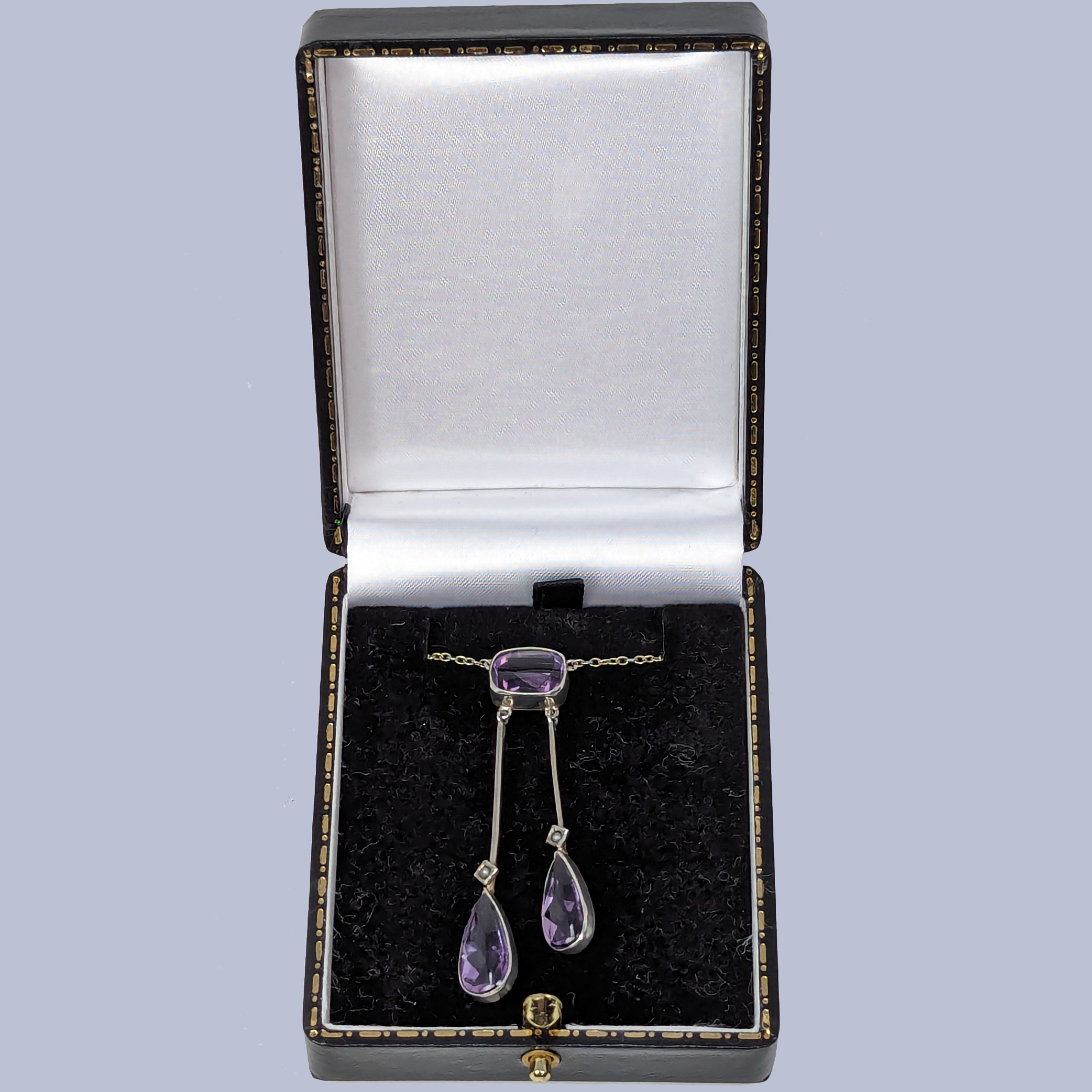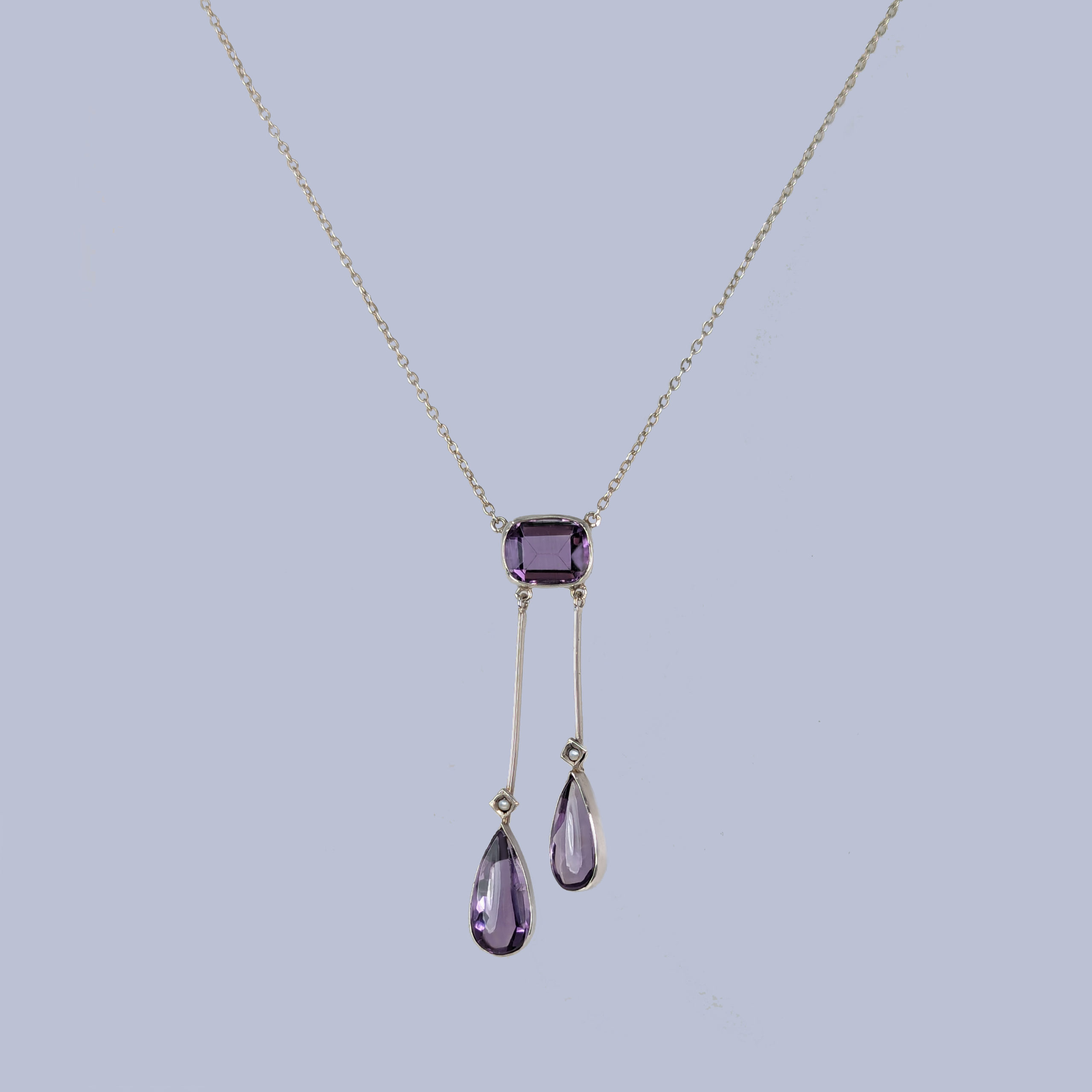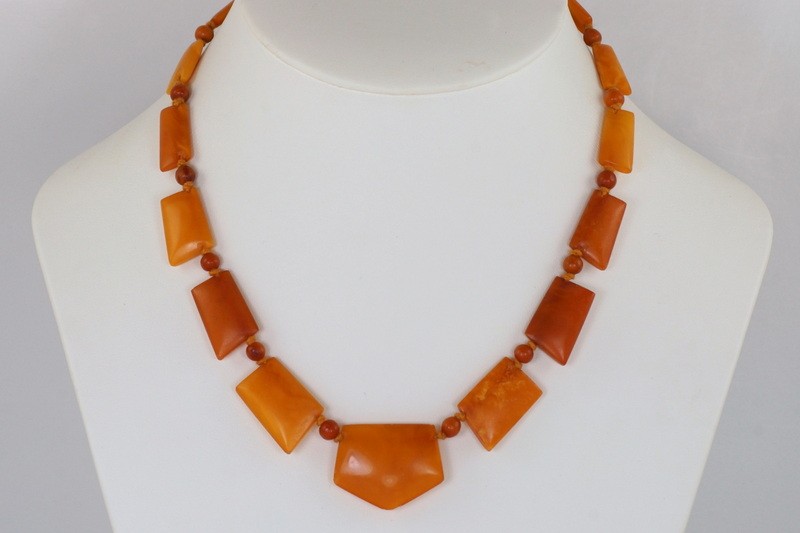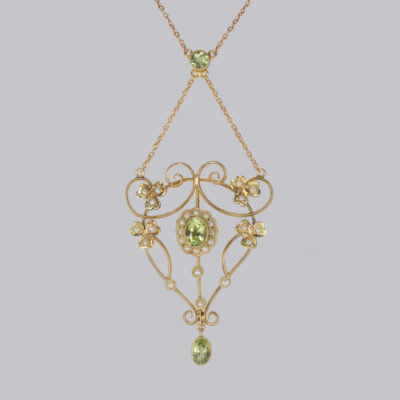Description
Fabulous Edwardian amethyst and seed pearl Necklace
Set with three gorgeous purple amethysts and two little seed pearls
To the top a cushion cut amethyst, suspended below on knife edge bars are two pear shaped asymmetrical negligé amethyst drops
The necklace hangs from an integral fine curb link chain with a spring clasp
This elegant necklace looks fabulous when worn
- Top cushion amethyst 10mm x 8mm.
- Pear shaped amethysts 16mm and 14mm long
- Necklace Drop 26cm. Chain 41cm
- Tests 18ct Gold
- It dates to around 1910
- Weight 4.7 grams
- It is in exceptional original condition.
- This Edwardian Amethyst and Pearl Necklace comes in the presentation box illustrated
- Our ref 23261
See more beautiful antique necklaces
What you should know about amethyst
Amethyst is the most expensive and the most beautiful member of the quartz family. The colours of amethyst range from deep purple to light to light lavender. Amethyst bead jewellery has been worn by women many thousands of years B.C. It was used by the Greeks and Romans in their intaglio seal stones and ceremonial jewellery. It was favoured by the Church for their bishops’ rings and crosses. In the Victorian period most Amethyst came from Siberia, today it is also mined in Brazil and Uruguay. Amethyst looks particularly fine when mounted in yellow gold and accompanied by pearls. Amethyst was very popular in the 1940s -1950s when it was cut into large rectangular stones which were set into fabulous yellow gold bracelets and brooches. It scores 7 on the Mohs hardness scale. Amethyst is one of the birth stones for February.
Caring for amethyst
The best way is with a soft toothbrush and warm soapy water. You must use a very soft brush, dip it into a bowl of warm soapy water and then very gently brush your Victorian amethyst pearl earrings. After a couple of minutes rinse each earring off under warm running water. Do this cleaning over a bowl, not in the sink, just in case something falls out. Then dry off with kitchen towel.
Pearls, amber and coral are precious gems produced by plants and animals. These gems are adored because they are so attractive and rare and have thus been worn as jewellery for thousands of years. The most highly prized and the most expensive of this group are the fabulous and amazing pearls, they have one unique quality, which is, they can be worn by anyone, at any time, in any situation!
Factors affecting the price of pearls.
Pearl types, Lustre, thickness of nacre, colour, shape, size, surface quality, treatment status. The most expensive type of pearl is the natural pearl, these were the only type available until about 1900, when Mikimoto started to produce cultured pearls. Cultured pearls are from farmed oysters, whereas natural pearls come from “wild” oysters. Also, we have sea water pearls from the oceans and freshwater pearls from the rivers and streams. Seed pearls were very small pearls used extensively in Victorian jewellery. Artificial pearls are made from many materials often coloured glass.
Pearls are traditionally the birthstone for June.
Care of your vintage antique pearls.
Pearls are delicate and can easily be damaged, pearl is just 2.5 on the Mohs hardness scale. They should be wrapped in silk cloth so that they do not dry out or become scratched by other hard objects or jewellery.
Pearls absorb oils from your skin and it keeps them looking bright and lustrous, otherwise, pearls will dry out.
Also, pearls are not resistant to sprays and perfumes.
-
Please call Paula on 07949058591


